Recent Fire Damage Posts
How SERVPRO of La Jolla Can Help with Fire Damage.
12/1/2023 (Permalink)
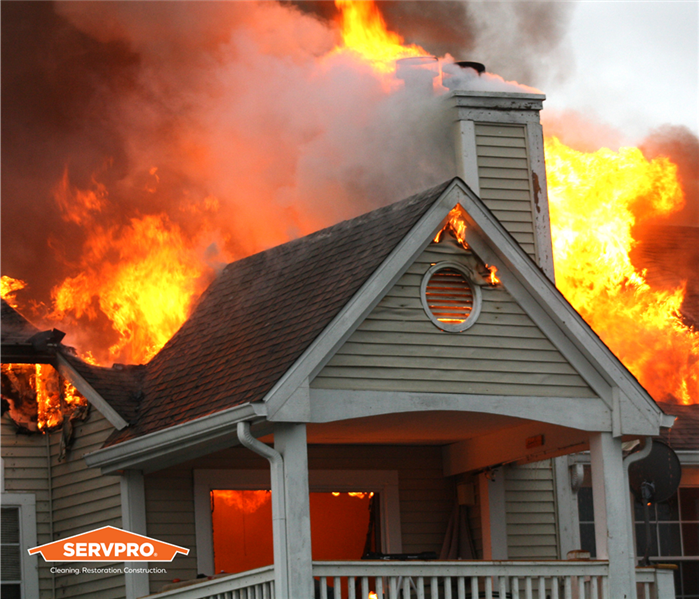 House with fire damage.
House with fire damage.
Fire damage is one of the most devastating things that can happen to a home or business. Not only does it cause physical damage, but it can also be emotionally and mentally traumatic for those involved. At SERVPRO of La Jolla, we understand how difficult this time can be and are here to help you through the process.
Our technicians are trained and certified to handle fire damage restoration. We use state-of-the-art equipment to remove smoke and soot from your property and clean and deodorize all affected areas. We also provide board-up and tarping services to secure your property and prevent further damage.
We work closely with your insurance company to ensure that you receive the coverage you deserve. Our team will handle all aspects of the restoration process, from initial assessment to final repairs. We are committed to providing you with the highest level of service and support during this challenging time.
If you experience fire damage in your home or business, call SERVPRO of La Jolla at 877-287-0880. We're available 24/7 to respond to your emergency and help you restore your property.
SERVPRO of La Jolla customizes a plan that is just right for you!
1/15/2021 (Permalink)
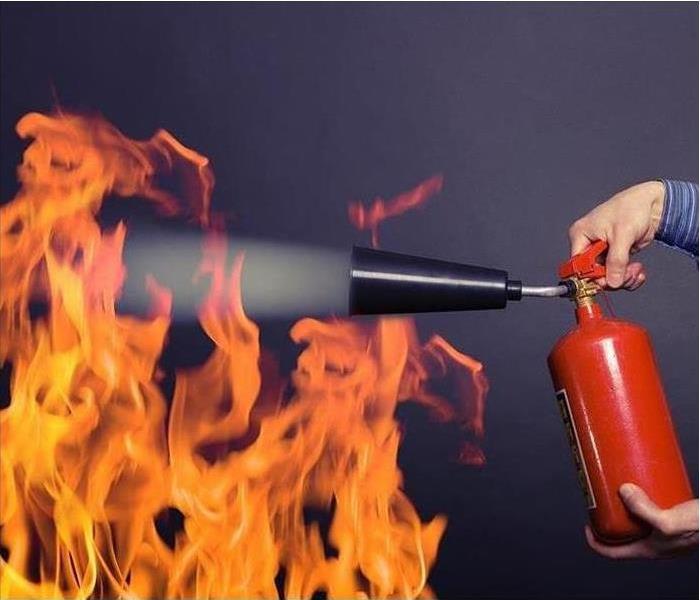 Select a company that will develop a plan that is custom to your situation.
Select a company that will develop a plan that is custom to your situation.
California wildfires happen every year and effect so many families. SERVPRO of La Jolla will be there for you at any time of the day to help you recover after a fire has struck. It's never an easy process to recover after a fire, but we are trained and experienced to handle the worst of situations.
We will develop a plan to get things back to normal for you as quickly as possible. We will walk you through the process so you feel comfortable and confident in our services that we provide. Selecting a restoration company for the job can be overwhelming as there are so many in San Diego. Go with a company that has been around and knows what they're doing. SERVPRO is a company you can rely on.
We offer free estimates if you would like for us to analyze the situation and provide you with a plan of action.
Cleaning up after a fire is our expertise!
1/13/2021 (Permalink)
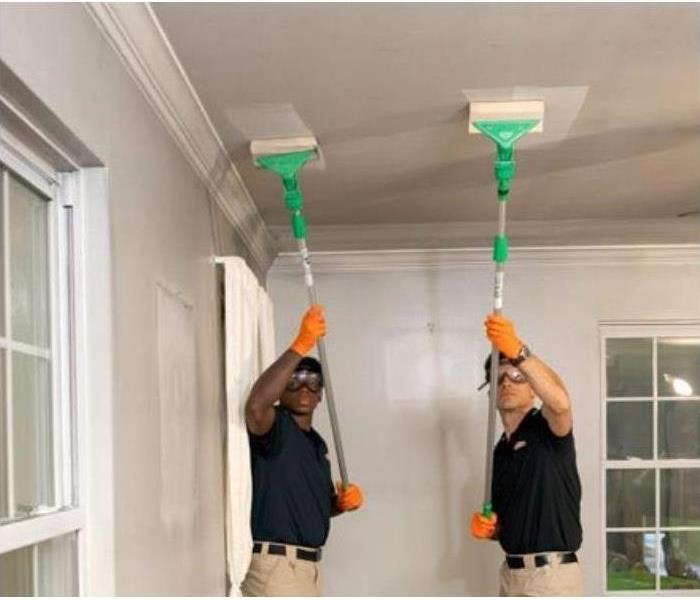 We are experienced in cleaning smoke soot from your home after a fire.
We are experienced in cleaning smoke soot from your home after a fire.
SERVPRO of La Jolla works together and communicates the appropriate plan of action to tackle your damages with care and proper execution.
Removing soot from your home can be timely and burdening. It's also hard to see sometimes with the naked eye. SERVPRO of La Jolla uses testing as well as special equipment and cleaning products to properly remove the soot from your home. Tiny particles can easily be left behind from a fire and be harmful to you, your family and your pets. It's important to ensure all the soot is removed after a fire.
SERVPRO of La Jolla will work with you to develop a plan and make sure you understand the process and feel comfortable with our services. We will work to restore your items rather than taking on the expense of replacing things the best we can.
Let us know if you need help with clean up after a fire. We've got you covered and will get the job done right.
Call us for a free estimate, 858-270-5234
Be sure to practice fire safety tips for preventing kitchen fires this holiday season!
12/14/2020 (Permalink)
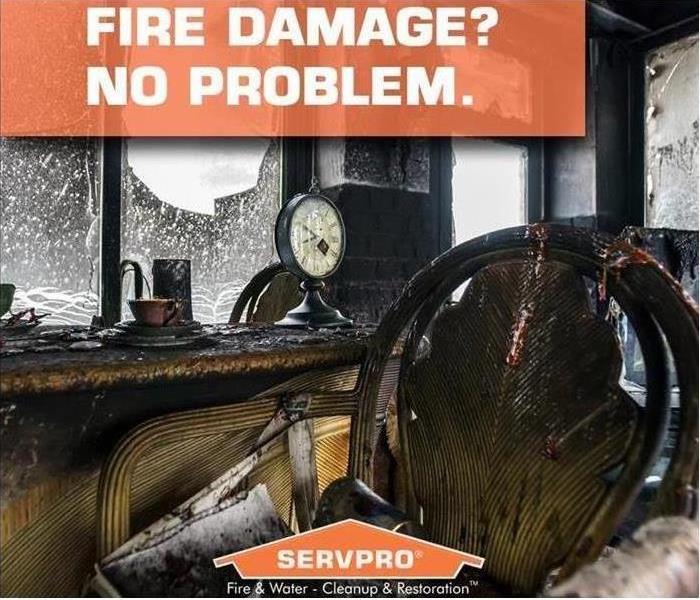 SERVPRO of La Jolla can help with any fire damage or restoration!
SERVPRO of La Jolla can help with any fire damage or restoration!
With the holidays here, your favorite recipes to make for family and friends come as well. While spending time with loved ones is important, it is also important to practice proper fire safety tips to prevent a kitchen fire.
* Did you know that when grease is too hot, it can catch fire? If you find yourself in this situation, place a lid over the pan immediately to cut off the oxygen levels. Always call 911 if you are in need of emergency help.
* Be alert and set kitchen timers. It is very easy to get distracted during the holidays with cooking multiple items, and interacting with family. Set timers to be sure you don't forget that something is cooking and stay near the heat source.
*Save getting in your planned outfit for later and wear clothing that is suitable for cooking in. Avoid wearing long, bagging clothing that can easily catch fire.
* Plan to have the children looked after. It's easy to get distracted with small children. Keep the children away from the heating sources to avoid accidents.
* Clean as you go to avoid items catching fire such as napkins, towels, plastic and wooden spoons.
If you find yourself in an unfortunate situation, always call 911.
SERVPRO of La Jolla can help with clean up and restoration with any fire. 858-270-5234
What are the most common ways house fires start?
11/2/2020 (Permalink)
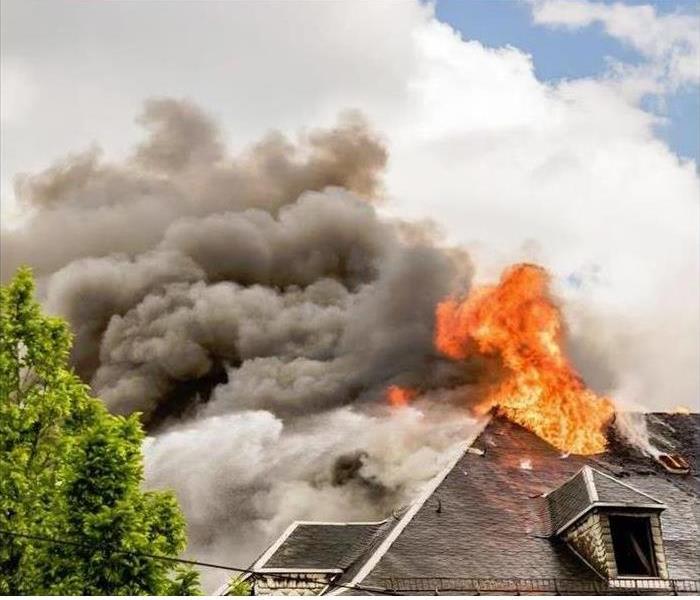 Ensure your home is safe of fires with practicing proper safety measures.
Ensure your home is safe of fires with practicing proper safety measures.
Fires can start in the smallest of ways and turn into the biggest problems. It's important to check your home regularly and be aware of the most common ways a fire can start to protect you and your family.
So, what are the most common ways that a fire can start in your home?
* Lighting: Most people do not think that lighting can be the cause of a home fire. Make sure that lamps cannot be knocked over, and that lamp shades are not too hot.
* Cooking: Be sure to not leave foods that are being cooked on the stove unattended to. If you need to leave the kitchen, ask someone to keep an eye on the food. it is very easy to get distracted by a phone call or tending to a child and forget you have food on the stove.
* Flammable Liquids: Do you keep flammable liquids in your garage? If you answered yes, you are not alone as most people do keep flammable liquids in their garage. Be sure to keep them away from heat sources and check the label before selecting an area for storage.
* Smoking in Bedrooms: It's best to not smoke in bedrooms as the cigarette bud can still be lit for hours after the cigarette bud has been put out.
* Bad Wiring in your Home: If you notice the lights go down with you use a certain appliance, this could be an indication that the wiring in your home is bad. To be safe, have an electrician come out to check.
* Children & Curiosity: Make sure to keep matches, and lighters away from children. Teach your children how to stop, drop and roll just in case!
* Portable Heaters: Be sure to keep portable heaters away from fabrics as they can get really hot and cause a fire.
* Candles: Candles are a great way to add ambiance to your home and fill the room with your favorite scents! Be sure you don't leave candles unattended to, they're kept away from fabrics, and also kept on sturdy surfaces and away from children. Practice these tips so you can continue to enjoy your favorite scents of every season!
Holiday Safety Tips from SERVPRO of La Jolla
10/27/2020 (Permalink)
 Practice proper safety tips this holiday season!
Practice proper safety tips this holiday season!
Winter time means the holidays are approaching and the time for small gatherings is near. Below are some helpful tips for the holiday season to prevent fires.
Decorating Tips
* When choosing decorations, it's best to choose flame resistant.
* Turn off lights before going to bed.
* Prior to hanging lights, check the cords for broken or damaged pieces.
* Instead of using nails, use clips to hang décor to avoid damaging the cords.
* Always keep candles away from fabrics or décor that can catch fire.
* Never leave candles unattended.
* Notice lights that are dedicated for indoor use and outdoor use and follow their instructions.
*Be sure your holiday tree is well watered to avoid drying out.
Entertaining Tips
*Go through your house and be sure that matches and lighters are kept in higher places if children are coming over.
* Keep children and pets away from candles.
* Show your guests the designated smoking area and have deep ash trays handy.
*Test your smoke alarms prior to having a gathering.
* Stay close to the kitchen if you are using the stovetop.
* Ensure you have a fire extinguisher.
Stay safe this holiday season!
Candle Tips & Advice
10/23/2020 (Permalink)
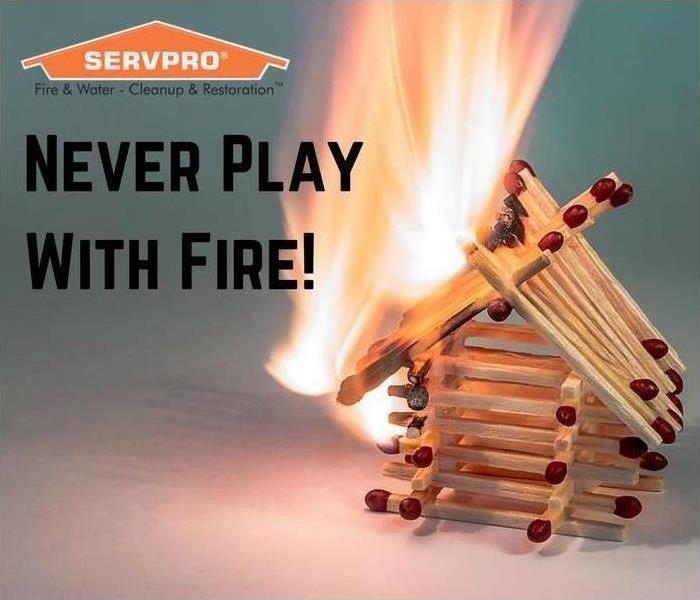 Be safe this holiday season and practice proper candle safety!
Be safe this holiday season and practice proper candle safety!
With the holiday season quickly approaching, your favorite candle seasonal scents are hitting the shelves in the store! While you are filling your home or business with different aromas, it is important to practice proper safety techniques when enjoying candles. Unattended candles have caused numerous fires in the homes of San Diego. Follow this simple advice below this season while enjoying candles.
* Consider candles that are not lighted (There are options for unlighted scented candles!)
* Ensure your candles are in a sturdy container to avoid them falling over
* Be mindful of small children or pets near candles and don't keep them in their reach
* Remember to blow out your candles before you go to bed or leave the house
* Make sure your candles are not near any sort of fabrics or decorative items
* Don't leave your candles unattended
Be safe this holiday season and practice proper candle safety!
Fires Cause Smoke Damage to Surrounding Neighborhoods
11/14/2019 (Permalink)
While some fires cause direct physical damage to structures, many people are not aware that smoke can travel for many miles and cause significant harm to far away homes and businesses. Soot, ash, and other airborne chemicals released by fires adhere to window coverings, stucco, and attic ducting. These chemicals create pungent fire and smoke odors that can make a home or business uninhabitable. Once affected by smoke in this way, simple home cleaning or air sanitizing won’t get the job done.
SERVPRO of La Jolla’s experts can examine the scope of damage caused by wafting wildfire smoke, and can provide a strategic plan to clean, deodorize, encapsulate and sanitize affected surfaces and building materials. Our team works together to make sure that your smoke smell is appropriately remediated.
SERVPRO of La Jolla, leaders in post Fire Cleanup
11/14/2019 (Permalink)
Everyone knows that SERVPRO is the industry leader in mitigation and restoration services for residential and commercial buildings. Here at SERVPRO of La Jolla we have taken that expertise a step further and created a professional detail-cleaning team as well. Our full time, certified cleaning staff is experienced in difficult circumstances like ultra-picky post-construction cleaning, sewage overflow cleanup, smoke and soot damage remediation, restaurant kitchen steam cleaning and more.
While many other companies may claim to be able to tackle a particularly difficult cleanup job, SERVPRO of La Jolla has the equipment, certifications, trained personnel and first-hand experience to get it done right and done quickly. Our broad suite of proprietary cleaning products ensures that we have the right tool for the job in all circumstances.
How Fire Damage Can Affect Your Health
11/8/2019 (Permalink)
Although smoke may smell good, it sure isn't good for your health.
While not everyone has the same sensitivity to wildfire smoke, it’s still a good idea to avoid breathing smoke if you can help it. And when smoke is heavy, such as can occur in close proximity to a wildfire, it’s bad for everyone.
Smoke is made up of a complex mixture of gases and fine particles produced when wood and other organic materials burn. The biggest health threat from smoke is from fine particles. These microscopic particles can penetrate deep into your lungs. They can cause a range of health problems, from burning eyes and a runny nose to aggravated chronic heart and lung diseases. Exposure to particle pollution is even linked to premature death.
Some people are at greater risk than others.
It’s especially important for you to pay attention to local air quality reports during a fire if you are
- a person with heart or lung disease, such as heart failure, angina, ischemic heart disease, chronic obstructive pulmonary disease, emphysema or asthma.
- an older adult, which makes you more likely to have heart or lung disease than younger people.
- caring for children, including teenagers, because their respiratory systems are still developing, they breathe more air (and air pollution) per pound of body weight than adults, they’re more likely to be active outdoors, and they’re more likely to have asthma.
- a person with diabetes, because you are more likely to have underlying cardiovascular disease.
- a pregnant woman, because there could be potential health effects for both you and the developing fetus.
source: www.epa.gov
Strong Winds Raising Threats of Wildfires in San Diego
10/29/2019 (Permalink)
Strong Santa Ana winds are expected to start on Tuesday night and continue through Thursday evening.
The National Weather Service has issued a red flag warning will be in effect Tuesday 6 p.m. through Thursday 11 p.m. in San Diego County's mountain and valleys.
The wind gusts could reach the strongest this season thus far - 55mph in the valleys and 75mph near the mountain ridge tops. Strong winds combined with very low humidity, as low as 5%, could pose a threat of wildfires.
Officials warned that these strong winds could blow down trees and power lines. SDG&E may be considering precautionary power outages as an effort to lower the chance of power lines sparking wildfires.
Areas that could be affected by the precautionary power shutoffs include Alpine, Boulevard, Campo, Descanso, Dulzura, portions of El Cajon, portions of Encinitas, portions of Escondido, Jacumba, portions of Jamul, Julian, portions of Lakeside, Mount Laguna, Pala, Palomar Mountain, Pauma Valley, Pine Valley, Potrero, Poway, Ramona, Ranchita, portions of Rancho Santa Fe, portions of San Clemente, portions of San Juan Capistrano, Santa Ysabel, portions of Valley Center and Warner Springs.
Fire and Smoke Restoration
3/20/2018 (Permalink)
In the wake of a fire that has covered homes with smoke and ash, it’s important to begin clean up as soon as possible in order to prevent permanent damage or discoloration from soot residue. The IICRC provides the following tips for fire victims facing clean up:
- Practice safety first. Use a dust mask (like painters use) and gloves as you work.
- Ventilate the home. Place a box fan in an open window to draw the air and dust out.
- Clean from top to bottom. Start with the ceilings, walls and fixtures, and work your way down to the contents of the room, then to the floor.
- Vacuum floors and upholstery. Make sure your vacuum cleaner has a high efficiency filter. Otherwise, you risk blowing soot back into the air.
- Some draperies, clothing and machine-washable items may be laundered. Use a mild alkaline cleaner to neutralize the acid in the soot. Fine clothing should be dry cleaned.
- Most exterior walls (brick, stone, wood, paint, siding) and eaves can be cleaned by spraying with a detergent, agitating soot with a soft-bristled brush, pressure washing from bottom to top, then rinsing from top to bottom.
- If the damage and residue are heavy, it may be best to hire a professional to thoroughly restore your home and belongings.
- Check with your insurance company to see if smoke damage from outdoor sources is covered by your policy.
- If the fire has warped or distorted the structure, consult a licensed general contractor.
Professional restoration technicians know that damage increases and restoration costs escalate the longer neutralization, corrosion control and cleaning is delayed. When homeowners prolong the restoration of their home, they extend the effects brought on by the smoke exposure. The following is a timeline of the effects of fire and smoke on a home.
source: www.IICRC.org
Tips for Fire Prevention and Preparedness at the Office
3/9/2018 (Permalink)
“Putting out a fire” is a common phrase used by businesspeople every day. But what if the fire is more than a metaphor? Do you know what to do to lessen the likelihood of an office fire breaking out — and how to react if one does?
According to the National Fire Prevention Association (NFPA), there were more than 98,000 non-residential building fires in 2012, the most recent year for which data is available. Many of them were in small offices and buildings. Estimated property loss from these blazes was $2.6 billion.
A 5-year NFPA analysis found that:
- Most “business and mercantile” fires occurred when the premises were less populated. One-third of the fires (31 percent) occurred between 7:00 pm and 7:00 am, but created two-thirds (67 percent) of the direct property damage. Nineteen percent occurred on weekends and created 31 percent of the damage. A lot of fires also broke out between noon and 2:00 pm.
- Twenty-nine percent of commercial blazes were caused by cooking equipment and resulted in 6 percent of the direct property damage; 22 percent began in the kitchen or cooking area, causing just one percent of direct damage.
- The most damaging fires started in an office. Though only 12 percent of business fires began in this location, they caused the most direct property damage (24 percent).
“Staples’ studies show that a majority of employees don’t feel their employers are prepared for any kind of emergency, including fires,” says Bob Risk, the company’s national sales manager for safety. “The truth is, most are, but they haven’t communicated their fire prevention plan well to employees.”
What do you — and your employees — need to know to lower the odds that your office becomes another statistic? It starts with the four P’s of fire prevention: plan, procure, practice and prevent.
1. Plan
“No matter the size of the office or the number of employees, someone should be designated as the safety officer,” says Ernest Grant, chairman of the board of the NFPA. This person leads the creation and execution of the emergency response plan, which includes:
- Escape Routes and Meeting Places: Determine and mark the fastest and safest paths to safety. Post maps (with “you are here” marks) in breakrooms and near exits — which should be clearly indicated with signs. Put up reminders that elevators cannot be used during most emergencies. Check emergency lighting in stairwells and make sure they aren’t used as storage areas. Create a procedure for evacuating employees and patrons with special needs, especially if the escape route includes stairs. Select a meeting place far enough away from the building to allow full access to the property by firefighters and other emergency personnel.
- Emergency Procedures: Make sure employees know that the safety officer is in charge during emergencies. Identify by name and title (whenever possible) the people responsible for contacting the fire department, accounting for employees at the meeting place and assisting emergency personnel with information on equipment or chemicals housed in the building. Keep an up-to-date list of emergency contact information. Outline who notifies the next of kin of injured parties, and designate one person to notify emergency responders of people still in the office or unaccounted for.
2. Procure
There are a few specific items you need for fire safety, such as fire extinguishers and smoke alarms — but most commercial buildings are required to have these items installed to meet local building codes. Check with your fire marshal to learn the requirements for your municipality. Test alarms and check extinguisher charges each month; replace/recharge immediately when indicated.
Additional emergency supplies include a stocked first aid kit, bottled water and flashlights. “One company we work with supplies every one of their employees with an escape mask,” Risk notes. “That’s important since most people don’t succumb to the fire or the heat, but to smoke inhalation.”
3. Practice
The safety officer also schedules regular fire prevention trainings, refreshers and drills. “When you have a fire or another emergency, it’s an extremely scary, confusing and rushed situation — and many people don’t operate well that way. So it’s almost like you need to be in muscle memory.”
Hold drills and review procedures frequently, and include emergency response information in new employee orientation. Play the alarm to make sure employees know what it sounds like — it can be a beep, a horn and/or an overhead announcement — and what to do when they hear it. Inspect nuisance alarms (like those false alarms from burning popcorn in the microwave) so employees don’t start ignoring the sound. Include real-time shutting down of critical equipment if required by law or regulation in the event of an emergency. Run contests to see how quickly employees can exit their workspace, reminding them that personal items may need to be left behind. Ask the fire department to conduct periodic trainings for all employees on how to use a fire extinguisher.
4. Prevent
Grant, who’s also outreach coordinator for the North Carolina Jaycee Burn Center in Chapel Hill, offers these tips for lowering the risk of fire in the first place:
- Follow manufacturers’ recommendations for maximum volt/wattage load for surge protectors, power strips and adapters, and ask your electrician to periodically inspect these items and outlets for potential overload
- Replace frayed power cords; never run them under rugs or carpeting, use cord protectors instead
- Unplug appliances (coffeemakers, microwaves) and other equipment not in use at the end of the day and over the weekend
- Replace appliances that feel warm or hot to touch
- Ask the fire marshal to inspect chemical and equipment storage areas periodically to ensure proper ventilation and stowage
- Store hazardous materials according to manufacturers’ instructions and OSHA regulations. Clearly mark these items to help emergency personnel identify and stabilize them
- Don’t prop fire doors open or block exits with furniture or boxes
- Don’t allow paper and other trash to accumulate outside of garbage or recycling receptacles, and never store this material near hot equipment, electrical outlets or the smoking areas
- Don’t permit employees to burn candles, scented oils, etc., even in their personal work areas
Following the four P’s is the best way to protect your business and your employees. “Having an evacuation plan and practicing a fire drill will ensure that employees know what to do in case of a real fire emergency,” says Bill Mace, who oversees education and outreach for the Seattle Fire Department.
Adds Grant: “This prevents confusion and minimizes the possibility of someone sustaining an injury.”
After all those fire drills in school, too many of us take fire prevention and safety for granted. That’s why it’s crucial for business owners, office managers and safety officers to set the right tone, Risk says. “If you don’t take it seriously, your employees won’t either. I always say, ‘It’s a lot easier to prepare for an emergency than to explain why you didn’t.”
Note: Don’t disregard professional fire prevention and emergency preparedness advice, or delay seeking it, because of what you read here. This information is not intended as a substitute for professional consultation by fire marshals, insurance agents and others; it is provided “as is” without any representations or warranties, express or implied. Always consult the fire marshal or your insurer if you have specific questions about any fire safety matter.
source: www.staples.com
Fire Safety for Kids
3/1/2018 (Permalink)
Prevention and safety messages to share
Make an escape plan
It is important to have a plan when there are children in your home. Children sometimes need help getting out of the house. They may not know how to escape or what to do unless an adult shows them.
- Have a plan for young children who cannot get outside by themselves. You will need to wake babies and very young children and help them get out. In your plan, talk about who will help each child get out safely.
- It is important to find two ways out of every room in your home, in case one exit is blocked or dangerous to use.
- Choose a meeting place outside your home. Children should know what to do when they hear a smoke alarm and there is no adult around. Help them practice going to the outside meeting place. Teach them to never go back inside a building that is on fire.
Keep children safe from fire and burns
Some children are curious about fire. There are simple steps you can take to keep you and the people you love safer from fire and burns.
- Keep children 3 feet away from anything that can get hot. Space heaters and stove-tops can cause terrible burns. Keep children at least 3 feet away from stoves, heaters or anything that gets hot.
- Keep smoking materials locked up in a high place. Never leave cigarette lighters or matches where children can reach them.
- Never play with lighters or matches when you are with your children. Children may try to do the same things they see you do.
source: www.usfa.fema.gov
Tips on Frying Turkeys Safely
2/7/2018 (Permalink)
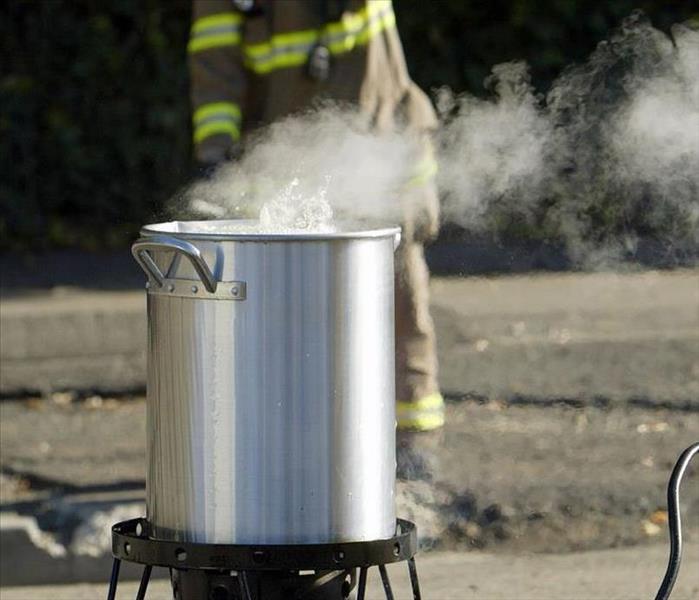 Deep Frying Turkeys Safely
Deep Frying Turkeys Safely
In recent years deep-frying turkeys has become increasingly popular. The cooking method requires placing the turkey in three gallons or more of oil, heated by propane.
Before you ever get near the deep fryer, The Tempe Fire Medical Rescue Department wants you to know that, however you cook your turkey, safety starts with proper thawing. Leaving a turkey out on a counter to thaw can cause Salmonella poisoning.
Turkey (and all meats and fish, really) should be thawed in the refrigerator. Give yourself enough time to properly thaw your turkey. Here are the USDA guidelines for thawing a whole turkey in the refrigerator:
- 4 to 12 pounds: one to three days
- 12 to 16 pounds: three to four days
- 16 to 20 pounds: four to five days
- 20 to 24 pounds: five to six days
Avondale Fire & Medical Department warns that cooking with deep-fat turkey fryers can be very dangerous as they have a high risk of tipping over, overheating, or spilling hot oil. That could lead to fires, burns, or other injuries.
Dangers of Frying a Turkey
Here are five dangers associated with deep frying a turkey, according to the Avondale Fire Department.
- Units can easily tip over, spilling hot cooking oil over a large area.
- An overfilled cooking pot or partially frozen turkey will cause cooking oil to spill when the turkey is inserted.
- A small amount of cooking oil coming into contact with the burner can cause a large fire.
- Without thermostat controls, deep fryers have the potential to overheat the oil to the point of combustion.
- The sides of the cooking pot, lid and pot handles can get dangerously hot, creating severe burn hazards.
Avondale Fire Rescue advises against using a turkey fryer. If you decide to do it anyway, these precautions should be followed.
If You Fry a Turkey, Do So Safely
- Fryers should always be used outdoors, on a solid level surface a safe distance from buildings and flammable materials.
- Never use a fryer on a wooden deck, under a patio cover, in a garage or enclosed space.
- Do not overfill the fryer.
- Never leave the fryer unattended because, without thermostat controls, the oil will continue to heat until it catches fire.
- Never let children or pets near the fryer when in use or after use as the oil can remain hot for hours.
- Use well-insulated potholders or oven mitts and wear long sleeves and safety goggles to protect from splatter.
- Make sure the turkey is completely thawed before it is placed in a fryer.
- Keep all-purpose fire extinguishers nearby.
- If a turkey fryer fire occurs, call 911 immediately.
If you run into trouble and need help cleaning up fire damage, please call us at SERVPRO La Jolla. 858.270.5234
source: www.tripsavvy.com
Christmas Tree Fire Prevention
11/30/2017 (Permalink)
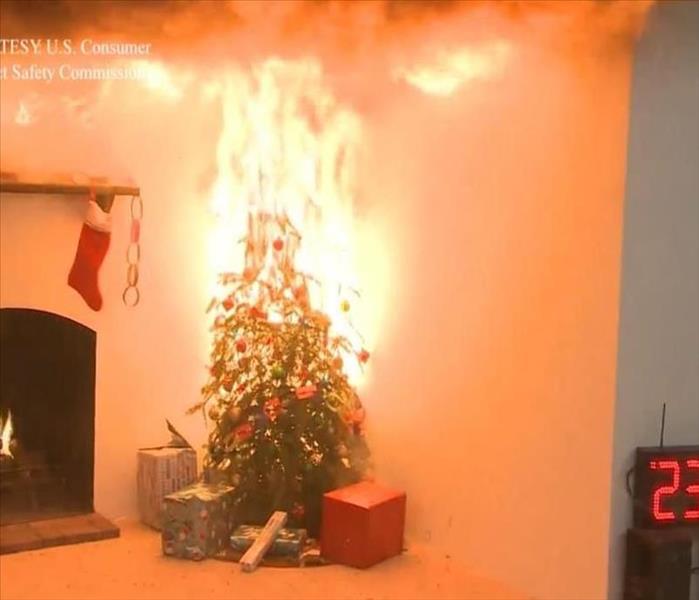 Christmas Tree Fire Danger
Christmas Tree Fire Danger
Your beautifully decorated Christmas tree can also be a deadly fire hazard.
Christmas tree fires are infrequent, but when they do occur, they are serious, according to the National Fire Protection Association.
Fire departments responded to an average of 230 home fires caused by Christmas trees each year from 2007-2011. The result was a yearly average of six deaths, 22 injuries and $18.3 million in property damage, the NFPA reported.
Here is a list of holiday fire safety tips from NFPA and FEMA's U.S. Fire Administration:
1) When choosing a tree, look for one that is fresh and has green needles that don't fall out. Brownish needles mean the tree is dried out and more prone to catch fire.
2) Water your tree daily to prevent it from drying out.
WATCH: Demonstration shows Christmas tree fire danger
3) Check the manufacturer's labels to ensure you use only lights and decorations that are flame-retardant. Look for a nationally recognized testing laboratory, such as Underwriters Laboratories, Intertek or the Canadian Standards Association, according to the Consumer Product Safety Commission.
4) Check holiday lights for frayed wires or excessive wear.
5) Don't connect more than three strands of mini-string sets and a maximum of 50 bulbs for screw-in bulbs.
6) Keep your tree at least 3 feet away from any heat source, such as a fireplace, radiator, candles or lights.
7) Make sure your tree is not blocking an exit. In case there is a fire, you want a way to get out.
8) Always turn off lights on a tree before going to bed or leaving your home.
9) Get rid of a tree when its needles start dropping. It means the tree is drying out.
10) Check that your smoke alarm is working properly.
Oven Fire in our Condo
9/2/2016 (Permalink)
My husband called me one evening on my way home from work and told me whatever he tried to bake me turned into a hot black mess of smoke and soot. Walls, cabinets, appliances, floors and ceilings were all black. Called SERVPRO La Jolla and they began the work the same day. In fact, I called at 6:30pm and they were at my house by 7:45. Thanks to SERVPRO of La Jolla for living up to their promises on emergency services for fire restoration work!!

 24/7 Emergency Service
24/7 Emergency Service








